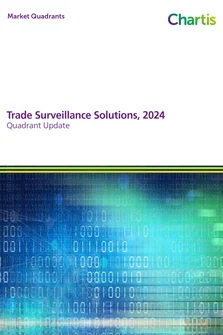<p>The market for energy trading risk is highly diverse, which can make it difficult to sum up the market as a whole. It covers a range of commodities and sectors, which means that ‘energy’ will be viewed as part of commodity trading by some and as a separate branch of risk management by others. Sub-sections of the energy market include electricity markets, coal (tightly linked to logistics), oil (the most geographically integrated market, but divided by different production grades), gas (a networked market often linked to oil indices), petrochemicals and refining, renewables, recycling, retail markets, industrial wholesale markets, and logistics.</p>
<p>As well as the complexity of the market structure, there is also a wide range of players in the energy markets. Actors as varied as regulated utilities, brokers, hedge funds, banks, and industrial users have significantly diverse needs. For each of these actors, the concept of “energy trading risk management” may mean something different and have different business and technology requirements.</p>
<p>While the market is diverse and split into subgroups, there are a number of key trends that are affecting the market as a whole. Traditionally, the models and frameworks for energy trading risk management have been based on those in financial markets, but the needs of the energy trading risk markets are different. Strategies and technologies need to evolve to meet the changing needs and increased complexity of energy markets and to be able to respond to particular trades within markets.</p>
<p>The development of the market has centered on increasing complexity and the demand for more integrated risk management. While energy trading risk management previously emphasized VaR analysis and hedge accounting, credit risk, which is complex and computationally intensive, is becoming more prominent. Operational risk, including geopolitical risk, should be incorporated into risk measurements. Risk analytics must also be built on a firm data foundation that allows firms to build up a clear view of risks across asset types and sectors. Additionally, systems will need to have real-time data capabilities, particularly for market data feeds, alongside real-time business intelligence.</p>
<p>In addition to the effects of energy-specific regulations, new rules and reporting requirements from the FCA, EMIR, REMIT, and Dodd-Frank on reporting and clearing will also affect the marketplace. This has already begun with the “futurization of swaps” and the subsequent lower than expected number of swaps dealers and major swap participants showing the increased effect of regulation on energy trading. As in other markets, regulations to reduce highly structured trading are coming through the energy derivatives markets. Financial regulation which aims to increase the transparency of the derivatives markets will be a key driver for energy trading risk management.</p>
<p>The complexity of the market means that there are a number of different approaches towards energy trading risk management and a number of different technology solutions available. Valuation, pricing, and risk management in an energy context require robust and flexible technology solutions and require a specific range of functionalities, which are either not common or as prevalent in other markets.</p>
<p>This report covers the technology requirements and the vendor landscape for energy trading risk management. No single product or vendor’s family of products has comprehensive coverage and different vendors emphasize different capabilities. There has also been a continued consolidation of vendors in the market as vendors have looked to build out their functionality over the past 18 months. It can therefore be difficult for buyers to determine which solution or solutions meet their needs.</p>
<p>This report aims to help buyers decide using Chartis’s RiskTech Quadrant™ to help to throw light on the market. The RiskTech Quadrant™ uses a comprehensive methodology of in-depth independent research and a clear scoring system to help explain which technology solution meet the needs of various financial institutions. The RiskTech Quadrant™ does not simply describe one vendor as the best energy trading risk management system provider; it has a sophisticated ranking methodology to explain which solutions would be best for buyers, depending on their implementation strategies and business needs.</p>
<p>This report covers the leading vendors offering energy trading risk management solutions, including Allegro, Amphora, Aspect, Brady Energy, EKA Software, Murex, OpenLink, Pioneer, SAS, SunGard, Triple Point, and Ventyx.</p>
Only users who have a paid subscription or are part of a corporate subscription are able to print or copy content.
To access these options, along with all other subscription benefits, please contact info@risk.net or view our subscription options here: http://subscriptions.risk.net/subscribe
You are currently unable to print this content. Please contact info@chartis-research.com to find out more.
You are currently unable to copy this content. Please contact info@chartis-research.com to find out more.
Copyright Infopro Digital Limited. All rights reserved.
As outlined in our terms and conditions, https://www.infopro-digital.com/terms-and-conditions/subscriptions/ (point 2.4), printing is limited to a single copy.
If you would like to purchase additional rights please email info@chartis-research.com
Copyright Infopro Digital Limited. All rights reserved.
You may share this content using our article tools. As outlined in our terms and conditions, https://www.infopro-digital.com/terms-and-conditions/subscriptions/ (clause 2.4), an Authorised User may only make one copy of the materials for their own personal use. You must also comply with the restrictions in clause 2.5.
If you would like to purchase additional rights please email info@chartis-research.com


